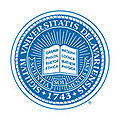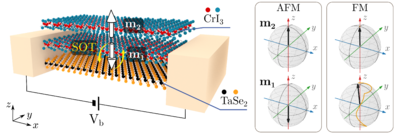Main Page: Difference between revisions
From qttg
Jump to navigationJump to search
No edit summary |
No edit summary |
||
| Line 28: | Line 28: | ||
*[http://web.physics.udel.edu/research/nanoscale-physics/nanoscale-thermoelectrics nanoscale thermoelectric devices], | *[http://web.physics.udel.edu/research/nanoscale-physics/nanoscale-thermoelectrics nanoscale thermoelectric devices], | ||
*[http://www.physics.udel.edu/~bnikolic/PDF/jj_review.pdf strongly correlated heterostructures]. | *[http://www.physics.udel.edu/~bnikolic/PDF/jj_review.pdf strongly correlated heterostructures]. | ||
We are also working on the development of new theoretical and computational formalisms, often involving massively parallel codes, which are required to study quantum many-body systems far from equilibrium. The principal tools that we employ daily include [[Fast Facts about NEGF|nonequilibrium Green function theory]], density functional theory, and dynamical mean field theory. Our research is supported by the [http://www.nsf.gov/index.jsp National Science Foundation] and the [http://science.energy.gov/bes/epscor/ U.S. Department of Energy]. | We are also working on the development of new theoretical and computational formalisms, often involving massively parallel codes, which are required to study quantum many-body systems far from equilibrium. The principal tools that we employ daily include [[Fast Facts about NEGF|nonequilibrium Green function theory]], density functional theory, and dynamical mean field theory. | ||
Our research is supported by the [http://www.nsf.gov/index.jsp National Science Foundation] and the [http://science.energy.gov/bes/epscor/ U.S. Department of Energy]. | |||
|- | |- | ||
! <h2 style="margin:0;background:#FFE680;font-size:120%;font-weight:bold;border:1px solid #BFAC60;text-align:left;color:#000;padding:0.2em 0.4em;">Research Highlights</h2> | ! <h2 style="margin:0;background:#FFE680;font-size:120%;font-weight:bold;border:1px solid #BFAC60;text-align:left;color:#000;padding:0.2em 0.4em;">Research Highlights</h2> | ||
Revision as of 17:33, 1 March 2012
|
| Wiki goals · Physics & Astronomy · University of Delaware | Help · WikiLaTeX · Dictionary |
|
Wiki Getting Started
Consult User's Guide for information on using the wiki software.

